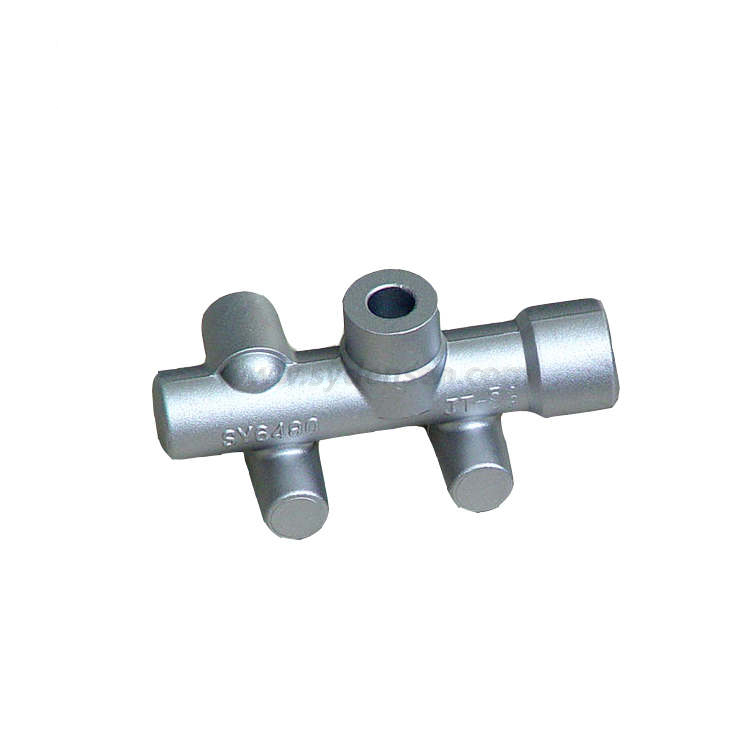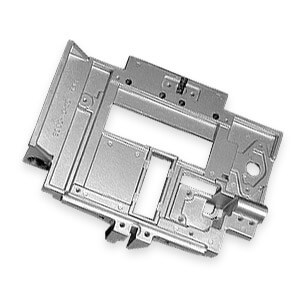Environmental Impact of Aluminum Foundry and Why It Matters
Aluminum Casting Explained: Secret Facts and Insights for Industry Professionals
Aluminum casting works as an essential procedure in modern manufacturing, forming components throughout numerous sectors. Its diverse approaches, such as sand and die casting, satisfy different production demands. The distinct properties of aluminum alloys enhance their applicability, yet tests continue to be in maintaining high quality and efficiency. Recognizing these elements is vital for sector professionals. What are the most recent advancements and ideal practices that can even more enhance this procedure?
Review of Aluminum Casting Processes

Secret elements of aluminum casting procedures include the preparation of mold and mildews, which might be made from sand, metal, or ceramic materials, depending on the intended usage. Furthermore, temperature control is vital to assure proper melting and solidification of aluminum.
The casting procedure permits complex designs and can achieve high degrees of dimensional accuracy. As soon as cooled, the castings may go through finishing operations such as machining or surface area treatment to meet certain efficiency criteria. In general, aluminum casting serves as a flexible production strategy, successfully satisfying the varied demands of various industries.
Kinds Of Aluminum Casting Methods
In the domain of aluminum casting, various methods are utilized to attain various results. Sand casting techniques provide flexibility and cost-effectiveness for complex shapes, while die casting processes offer high accuracy and performance for mass manufacturing. Comprehending these techniques is crucial for choosing the suitable approach based on job needs.
Sand Casting Strategies
Sand casting methods represent a fundamental method in aluminum casting, where sand is used as a mold and mildew product to shape liquified steel. This procedure includes developing a pattern from the preferred part, which is after that positioned in a sand combination to develop a mold. The sand is compacted around the pattern, and after elimination, it produces a cavity in the form of the part. Molten aluminum is poured into this dental caries, enabling it to solidify and cool down. One considerable advantage of sand casting is its versatility; it can suit big elements and complex shapes. In addition, the materials utilized are reasonably cost-effective, making it an available choice for different production applications in the aluminum market.
Die Casting Processes
Die casting processes are a popular approach for forming aluminum components, using high-pressure techniques to force molten steel right into specifically crafted molds. This procedure is specifically favored for its ability to produce complicated forms with limited resistances and a smooth coating. There are two main kinds of die casting: warm chamber and chilly chamber. Hot chamber die casting appropriates for metals with low melting points, allowing for faster manufacturing rates. Alternatively, cool chamber die casting is excellent for greater melting point steels, needing a separate melting furnace. Both methods boost efficiency and decrease material waste, making them important in automobile, aerospace, and durable goods markets. Understanding these procedures assists experts choose the most ideal strategy for their details applications.
Product Properties of Aluminum Alloys

Strength and Resilience
Stamina and longevity are important qualities of aluminum alloys that make them suitable for numerous casting applications. These materials exhibit a favorable strength-to-weight ratio, enabling the production of light-weight yet durable parts. When it come to tensile stamina, certain aluminum alloys can be crafted to stand up to significant tons without deforming. This residential or commercial property is particularly crucial in sectors such as aerospace and auto, where performance and safety and security are paramount. Furthermore, aluminum alloys usually keep their mechanical properties under varied temperature level conditions, ensuring constant performance. The intrinsic ductility of these alloys additionally enables efficient shaping throughout the casting procedure, making it simpler to create intricate geometries. On the whole, the strength and sturdiness of aluminum alloys contribute greatly to their extensive use in advanced applications.
Corrosion Resistance Characteristics
While aluminum alloys are prized for their strength and light-weight residential properties, their deterioration resistance is another vital attribute that improves their suitability for numerous applications. Aluminum naturally develops a protective oxide layer when revealed to moisture, which aids to prevent additional oxidation. This fundamental residential property makes aluminum alloys particularly important in environments vulnerable to corrosion, such as marine and industrial setups. In addition, different alloy compositions can affect resistance levels, with particular alloys particularly engineered to improve this particular. Therapies like anodizing can better boost rust resistance by enlarging the oxide layer. Recognizing the deterioration resistance of aluminum alloys is crucial for sector professionals when selecting materials for tasks needing longevity and long life in difficult atmospheres.
Advantages of Aluminum Casting in Production
Aluminum casting deals numerous benefits in production, making it a recommended choice for different markets. One significant benefit is its lightweight nature, which adds to reduced transport costs and boosted power performance in end products. Furthermore, aluminum's exceptional thermal and electrical conductivity boosts functionality in applications calling for warmth dissipation or electrical conduction.
The product's capacity to be cast into intricate forms enables style versatility, lowering the demand for additional machining procedures. Additionally, aluminum casting exhibits remarkable rust resistance, causing longer product life expectancies and lower upkeep costs.

Usual Applications of Aluminum Castings
The versatility of aluminum casting enables its extensive usage across different industries. Usual applications consist of auto parts, where light-weight and corrosion-resistant elements, such as engine blocks and transmission real estates, improve lorry efficiency. In the aerospace field, aluminum castings are used for architectural elements, offering toughness without adding significant weight.
Furthermore, the electric industry take advantage of aluminum castings in manufacturing rooms and warmth sinks, where thermal conductivity is necessary. The durable goods field also integrates aluminum castings in products like cookware, furnishings, and ornamental products, integrating Aluminum Casting Company visual appeals with capability.
The construction industry employs aluminum castings for building elements, window structures, and fixtures, which provide durability and layout adaptability. On the whole, the varied applications of aluminum spreadings emphasize their relevance in modern production, adding to innovations in effectiveness and product style throughout numerous fields.
Innovations and Technological Advancements
As markets remain to advance, developments in aluminum casting innovation are transforming manufacturing processes and item capabilities. Improvements in 3D printing and additive manufacturing have enabled the development of intricate geometries that were formerly difficult to achieve with typical techniques. These modern technologies permit fast prototyping, decreasing lead times and expenses.
Additionally, renovations in mold design and materials have actually improved the casting process by increasing performance and lowering waste. The combination of smart production techniques, such as IoT gadgets and real-time data analytics, allows for much better surveillance and optimization of production parameters, leading to better outputs.
In addition, developments in aluminum alloys provide boosted stamina, rust resistance, and lightweight residential properties, catering to the expanding demands in automotive and aerospace markets. Jointly, these advancements are not just enhancing efficiency yet also fulfilling the strenuous requirements of modern-day engineering applications.
Finest Practices for High Quality Control in Aluminum Casting
Making certain top notch outcomes in aluminum casting needs adherence to ideal methods that incorporate various phases of the production process. Extensive product assessment is vital to verify the top quality of aluminum alloys used, as pollutants can considerably impact the last product. Applying specific melting and putting techniques reduces issues; maintaining perfect temperature levels prevents oxidation and promotes harmony.
In addition, mold and mildew layout plays a crucial role; making use of computer-aided layout (CAD) can enhance accuracy and lower human error. Normal tracking of the cooling procedure is important to avoid warping and shrinking. Furthermore, utilizing non-destructive screening approaches, such as ultrasonic or X-ray evaluations, assists determine internal flaws without harming the elements.
Establishing a comments loop with engineers and operators fosters continuous improvement, making sure that high quality control actions progress along with technological advancements. By following these finest methods, producers can enhance the integrity and efficiency of aluminum castings.
Regularly Asked Inquiries
What Are the Ecological Influences of Aluminum Casting?
The ecological effects of aluminum casting include considerable power usage, greenhouse gas exhausts, and possible water air pollution from factory operations. In addition, bauxite mining for aluminum ore can bring about habitat devastation and dirt degradation.
How Does Aluminum Casting Compare to Other Steel Casting Processes?
Aluminum casting commonly uses advantages in lightweight parts and deterioration resistance contrasted to other processes, such as iron or steel casting, which may give greater toughness however result in larger and much less corrosion-resistant items. - aluminum casting
What Are Common Problems in Aluminum Castings and Their Reasons?
Usual flaws in aluminum castings consist of porosity, shrinkage, and inclusions. Reasons frequently come from inappropriate putting techniques, inadequate mold style, or contamination of the liquified steel, influencing the end product's stability and performance.
What Security Safety Measures Should Be Taken Throughout Aluminum Casting?
During aluminum casting, necessary safety and security preventative measures include using safety equipment, making certain appropriate ventilation, maintaining a tidy work space, managing molten steel with care, and adhering to well-known methods to minimize risks of burns, inhalation threats, and accidents.
How Can I Enhance the Efficiency of My Aluminum Casting Workflow?
To improve performance in aluminum casting procedures, one need to enhance mold and mildew design, improve product handling, use automated processes, carry out normal upkeep on equipment, and invest in worker training to boost skills and performance.
Various approaches exist, aluminum casting includes a number of primary processes that provide to various applications and needs. Trick elements of aluminum casting processes include the prep work of mold and mildews, which may be made from sand, metal, or ceramic products, depending on the meant use. Sand casting techniques stand for an essential technique in aluminum casting, where sand is made use of as a mold and mildew product to shape molten steel. As sectors proceed to progress, advancements in aluminum casting innovation are changing production processes and product capabilities. Making sure high-quality outcomes in aluminum casting needs adherence to best practices that encompass different phases of the production procedure.